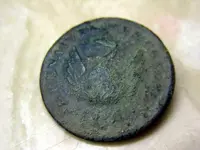Blaze, you've got some of the obvious links. Were you able to load up that entire Sprague article? (because it just has the teaser first page, I think, on your link). If not, and you want the rest of the article, PM me and I'll mail you a copy.
You've gotten some basics so far, from Kuger, etc... Yes they are found primarily on the west coast, but they are still hard to find, even over here. Most md'rs here have never found one, nor probably ever will. They circulated in the 1820s/30s, at which time the entire non-indian population here in CA was relatively sparse. You had the missions, the presidios, the pueblos, and the beginnings of private land grant ranchos by then. But to find locations of that age out here in CA to hunt, isn't easy. Because obviously any good location to put your habitation in those days, was ......... doh ....... a good location and thus probably now covered under cities asphalt and such. But some adobe sites or indian rancherias (the contact period indians traded with the incoming europeans) can be sleuthed out, which today may be nothing more than cow pastures, row crop land, or whatever. But unless you are of this relic mindset, and have lots of patience and research, no, they are not even common here in CA.
Probably less than 1000 have been found out here. And of those, the vast majority are between about 5 or 6 hunters. Others have collections of perhaps between 1 to 10-ish.
Up in Oregon/Washington area is the other area where they are/were found. However, most of the known recoveries from up there in the Columbia River area are from Indian Artifact hunters, not metal detector enthusiasts. And the buttons up there were/are deemed to burial artifacts for graves, not "fumble finger" losses as we think of them down here. Up in the Pac. NW, the indians had traditions of burying their dead with adornments, even before the Europeans came. Thus when the White man came, this tradition continued. Except that instead of shells, beads, arrowheads, etc... it was trade metal items. Thus hundreds upon hundreds of these buttons were found up there by early indian artifact hunters 1900 to 1960s, perhaps. And that is how Emory Strong, a local indian historian up there, got his interest/research on the topic, which started their lore. Ie.: it became sort of like a "bingo game" for collectors back in those days, up there, to assemble the different reg. #'s, sizes, etc.... to make "sets"

Certain #'s became known to be harder to find, for example. Others surfaced of which was previously unknown #'s, and so forth as time progressed.
Fast forward to the mid 1970s, and there was a few of the buttons auctioned off during an upscale high-end auction on the east coast somewhere. These few buttons, up for sale at that particular auction, garnered crazy high prices. Like $300 to $700-ish or whatever (big money at that time!). Later on, the reason for this over-bidding became clear: The auctioneer, in giving the dossier to prospective bidders, incorrectly told the audience that were XX # of these buttons "known to exist", when what he meant to say, was that there were XX
STYLES of these buttons "known to exist". So a few of the bidders must have thought they were bidding on something rarer than they actually were

Nonetheless, a xerox of these price results filtered back down through the ranks of various hobbyists, and some md'rs who ........ by that time ....... had found a few in CA. You can imagine that a few guys thought they were rich, and that their buttons were automatically worth this amount

Needless to say, by the early 1980s, they scarcely fetched $20 or $30 each, as simply too many hit the market, amongst not enough collectors (as it is just too narrow of a niche of history, to have high demands)
Yes the buttons were designed to fit the entire country of France's army, for their cash-cow colony of Haiti. But before they ever got sent for their intended destination, the country had become independent of France. So the buttons (multiple thousands of them apparently, which isn't unrealistic, when you assume 8 or 10 buttons per coat, for instance, and hundreds + hundreds of soldiers to outfit) made their way on to the surplus market in the very early 1820s.
It was originally thought that they were exclusively a west coast find, meaning that the ship carrying them, bound for fur/salmon trading posts in OR/WA simply went around the horn to come here. And then it either made stops on it's way up the CA coast going to Washington, or that the buttons here in CA came southbound by foot traffic/trading. I favor the theory that the ship (or "other" ships, who by then had gotten crates of them) stopped in the various mission ports here. Because they are found from San Diego (the southern-most mission) to Sonoma (the northern-most mission), with no particular density/distribution patterns that would favor northern CA (that you might expect if they came southbound by foot/horseback)
And at first, the few "flukes" known amongst archaeologists/relic hunters from the east coast, were considered to be so few, that they were probably just ones taken back east by persons returning cross-country back from the west coast. But now, with the proliferation of better and better detectors and more and more hobbyists from the 1970s to the present, and the advent of the internet w/lightening fast info. exchanges, it's now known that a good few hundred (?) have been found back east. Thus this causes one to wonder if the ship that had these, didn't stop on the east coast first, before rounding the horn to come out west? Because immigration, as you know, was almost always east to west, not west to east. However, Nathanial Wyeth was known to have headed east, on foot, after abandoning his trading post plans on the Columbia River. So as you can see, the theories are spread all over the place, as to how their provenances came to be. Not sure how R.I. fits into those demographics, but PM me and I'll give you a fellow's email who is writing a book on this very subject. He would have a better handle on their distribution, #'s, rarities per particular #s, etc....
Down here in CA, just like in OR/WA, they do seem to be found in connection with indian habitations. Although they can be found anywhere that 1830s or earlier sites exist. So we think they were an indian trade item. Sounds silly now, but at the time, when refined metals and manufactured goods were all new to the indians here, thus any manufactured good took on value, as a token or coin sort of thing. However, as I say, ours down here have nothing to do with burials.
At present, the prices ......... when one shows up on Ebay ..... can be as low as $20, to as high as $200-ish. Just depends on how many persons are looking at the same time, what the # and condition is, etc.... Not that ANY phoenix button isn't rare (when compared to relative known samples of particular CW buttons, for instance). It's just that there isn't a lot of demand to drive up the prices (when compared to the fierce competition for other regional things, like CW buttons, where simply much more enthusiasts bandy about). The type person who typically buys/collects phoenix buttons now, is usually persons who collected them themselves back in the earlier days on the Columbia River area (which is where, afterall, the intrigue started, the original theories proposed, the original collectors started categorizing and competing, etc....). Another collector I once sold to though, was a specialist in Haitian history, who wanted one. I guess the Haitan independance was no small deal on the world-history scheme of things (having ripple effects all through the European economy at that time, etc....). I have had as many as 3 or 4 bidding against each other, when I've listed some on Ebay, to as little as only 1.
Sorry so long here. Hope I answered some of your questions. Congrats on your cellar hole site! You've got a good relic appreciation mindset to hike 2 miles and be thrilled with buttons like all the ones in your photos. A lot of beginners don't appreciate the story nick-nacks like these weave about history, a site, the people, etc..... They would much prefer to see coins popping out of the ground, and don't have an appreciation for black-smithed copper slag, lantern parts, buttons, etc.















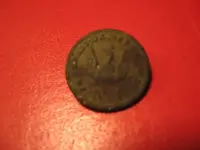 Phoenix button city 002.webp13.9 KB · Views: 1,479
Phoenix button city 002.webp13.9 KB · Views: 1,479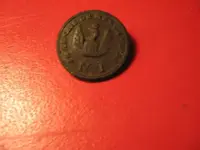 Phoenix button city 003.webp15.4 KB · Views: 1,485
Phoenix button city 003.webp15.4 KB · Views: 1,485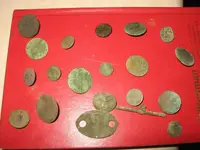 Phoenix button city 005.webp26.6 KB · Views: 1,517
Phoenix button city 005.webp26.6 KB · Views: 1,517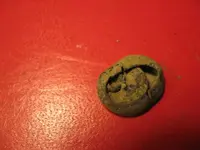 Phoenix button city 006.webp23.9 KB · Views: 1,436
Phoenix button city 006.webp23.9 KB · Views: 1,436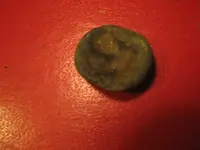 Phoenix button city 007.webp21.1 KB · Views: 1,524
Phoenix button city 007.webp21.1 KB · Views: 1,524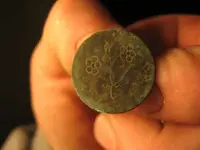 Phoenix button city 008.webp11.8 KB · Views: 1,606
Phoenix button city 008.webp11.8 KB · Views: 1,606




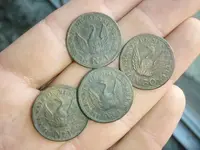

 Certain #'s became known to be harder to find, for example. Others surfaced of which was previously unknown #'s, and so forth as time progressed.
Certain #'s became known to be harder to find, for example. Others surfaced of which was previously unknown #'s, and so forth as time progressed.
 Outstanding
Outstanding 
